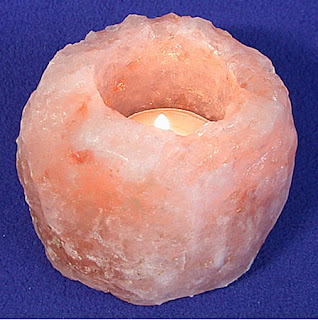Different Minerals in Rock Salt?
Himalayan salt is said to contain minerals that are good for your health. However, not all of the ingredients in Himalayan salt are technically minerals; some, such as hydrogen and oxygen, are elements, but not minerals. An examination was done on Himalayan salt that shows it contains both macro-minerals, such as calcium and chloride, as well as iron and zinc.
Rock salt contains many minerals including sodium chloride, which is also known to geologists as the mineral halite. Sodium chloride has a cubic structure and is white, but the pink in Himalayan salt comes from iron oxides. The mineral naturally rises from inorganic elements with the particular chemical configuration that have the crystalline structure. It gives unique shapes to crystals. When heats up it releases minerals which are great for health. That is why they come in different kinds of lamps which are referred as natural himalayan salt lamp.
The daily amount of these macro-minerals depends on your age, activity level, and general health. Calcium is the most common mineral in your body and is found in your bones and teeth, as well as playing a vital role in nerve and muscle health. The macro-minerals are needed in respective abundance and contain calcium, chloride, iron, magnesium, phosphorus, potassium, and sodium. Himalayan salt accommodates the minerals that are required for your health including macro-minerals and other discoverable minerals.
The nutrition required in humans, for many of the minerals found in Himalayan salt, remains unknown, and many of the minerals are found only in minute quantities. Himalayan salt contains some minerals that are toxic in large quantities including lead and plutonium, but are safe in trace amounts.
Benefits of Rock Salt You Need to Know About:
Other important aspects of minerals are regulation of body water content, food absorption through the intestinal tract, and helping in the production of hydroelectric energy in cells. This process encourages vascular health, regulation of your sleep, and a healthy pH balance primarily in your brain cells.
Rock salt contains many minerals including sodium chloride, which is also known to geologists as the mineral halite. Sodium chloride has a cubic structure and is white, but the pink in Himalayan salt comes from iron oxides. The mineral naturally rises from inorganic elements with the particular chemical configuration that have the crystalline structure. It gives unique shapes to crystals. When heats up it releases minerals which are great for health. That is why they come in different kinds of lamps which are referred as natural himalayan salt lamp.
The daily amount of these macro-minerals depends on your age, activity level, and general health. Calcium is the most common mineral in your body and is found in your bones and teeth, as well as playing a vital role in nerve and muscle health. The macro-minerals are needed in respective abundance and contain calcium, chloride, iron, magnesium, phosphorus, potassium, and sodium. Himalayan salt accommodates the minerals that are required for your health including macro-minerals and other discoverable minerals.
The nutrition required in humans, for many of the minerals found in Himalayan salt, remains unknown, and many of the minerals are found only in minute quantities. Himalayan salt contains some minerals that are toxic in large quantities including lead and plutonium, but are safe in trace amounts.
Benefits of Rock Salt You Need to Know About:
- The nutritional value of rock salt is so high that they have different effects on different parts of the human body. For your convenience, we have broken the benefits of rock salt down into the categories of health, skin, and hair!
- It supports absorption and is recommend for laxative and digestive disorders. It improves appetite, removes gas, and soothes acids.
- It facilitates the cellular absorption of minerals. It plays an important role in replenishing the body’s electrolytes and maintaining the pH balance. By refreshing blood circulation and mineral balance, it removes harmful minerals and refined salt deposits.
- It stabilizes blood pressure by maintaining a balance of high and low blood pressures.
- Rock salt is used as a home remedy for curing many disorders and ailments, such as rheumatic pain and herpes, inflammation, and irritation from insect bites.
- It is beneficial for people facing respiratory and sinus problems. With rock salt, it helps to improve throat swelling, relieves throat pain, dry cough, and tonsils.
- Rock salt is dissolved in water to prepare brine, which is used in facial steams for patients suffering from asthma, bronchitis, or other nose and ear discomforts.
- It can be used as a bath or body salt. You can mix a tablespoon of rock salt in your bath water to have a relaxing bath.
- Bathing in rock salt water combats water retention, soothes sore muscles, regulates sleep, detoxifies your body, and lowers your blood pressure. It also eases stress and body pains.
- It also strengthens the skin tissue to rejuvenate your skin, thus making it look younger and firm. Massaging your skin, with a salt scrub exfoliate, refines your skin, leaving it clean and refreshed, eliminating dead skin cells that cause your skin to look dull.
- Rock salt, used as a body scrub, brings great relief and can be made at home to rival spa standard products.
- It has excellent cleansing properties. The salt grains can cleanse your skin pores better than any soap or cleanser, and makes your skin breathe easily. You can mix a tablespoon of rock salt with your cleanser or face wash, and rub your face with it for a natural glow.
Other important aspects of minerals are regulation of body water content, food absorption through the intestinal tract, and helping in the production of hydroelectric energy in cells. This process encourages vascular health, regulation of your sleep, and a healthy pH balance primarily in your brain cells.

Comments
Post a Comment